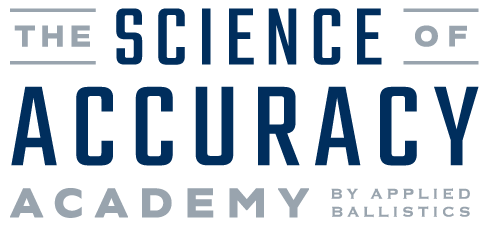Ladder Testing
01:01:35 | Ladder testing is a method of load development commonly used by precision hand loaders. In this episode, Bryan and Mitch analyze the ladder testing method and results obtained from an example ladder test conducted at the Applied Ballistics Laboratory. If you currently use the ladder testing method or are considering it, there is some good information for you in this discussion.



Your team is “killing ” a lot of people in a short period of time hahahaha, keep on this way, very interesting info
Thanks a lot
This definitely upends what some winning competitive shooters say is their load work up method. Like the barrel tuner test, a small sample may seem to confirm it but a large sample doesn’t support it. I have looked for a flat node and then a small SD/ES and then retest. I’ll try the 1% on my next rifle and look for low SD and not a node.
Dam, another technique negated.
How does AB find optimal charge weight Mr. Litz?
Very generally…
Fire a single shot at powder charges increasing by 1 grain increments (possibly 2 grain increments when over 100 grain charges are used).
Note where the brass/primer shows signs of pressure – over 0.0005″ of case head expansion as a general rule but this depends on type of brass, case design, etc.
Back off that charge 1-3 grains depending on the application.
This is the powder charge I’ll work with. If SD’s are poor with the primers and barrel length, then look for a primer that makes lower SD’s with the barrel length. If you can’t get low SD’s in your barrel with any primer, reduce the charge by 5% to 10% and try again, or try a different powder.
This is a very rudimentary explanation but it’s the basic approach.
I’ll write a paper/chapter on the full details and caveats.
-Bryan
This makes so much sense and such a better method. My last load was this – I thought I was just that good but in reality I was lucky that there was a flat spot towards the faster side of the load (about 1gr of Staball 6.5 below pressure signs). Over 100s of shots tracked – SD below 6 and ES settled to match the probability curve at around 36 but when you take out the few outliers closer to 24.
What are your thoughts on bullet seating depth tests and the effects there? Its not terribly different than tunning and it seems that most folks seat at some pre-determined increment (depending on if you jump a lot or if you are a jam kind of person). Is this something covered in one of your books I can reference? I assume you guys test this at Berger.
Thanks Bryan, I’m doing most of that process. I haven’t used primer change to assess lower SDs yet.
I love your books man, thank you for the attention to detail and process,.
Enzo
Hello, have you had a chance to write that paper about determining your charge weight yet? Thank you. Michael.
Can we please habe a mulit brand intensive seating depth test ?
Hybrid vs vld vs newer long SMK vs lapua sernors vs barnes match burner vs hornady ELD in a few cals
Would the benefit of a ladder test not give you 1, 2 or 3 charges (node points) a little bit apart that does not create a noticeable velocity difference (guess this is what you referring to at the 25min mark around SD of SD’s), in other words you buy yourself a sweet spot where the plain fact of we can’t be 1000% accurate. so whatever inconsistency we introduce we end with the same predictable velocity.